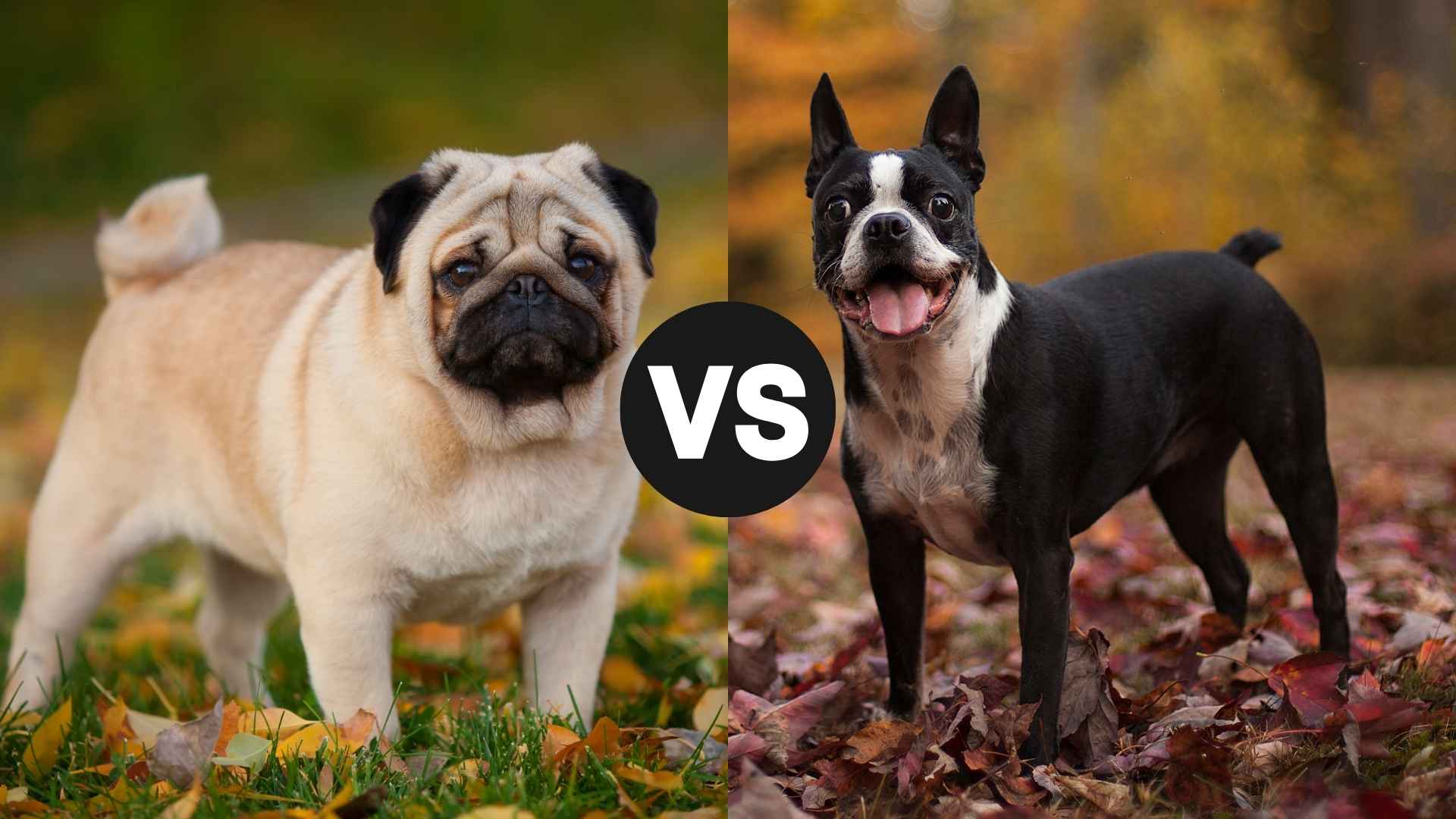When it comes to charming, compact dog breeds, the Pug and the Boston Terrier often top the list. Both breeds are small in size but big on personality, making them favorites for city dwellers, families, and first-time pet owners. While they may appear similar at a glance—with their expressive eyes and squished snouts—they come from different backgrounds and offer distinct experiences as companions.
Deciding between a Pug and a Boston Terrier requires more than just picking the cutest face. From physical features to trainability, health concerns to energy levels, each breed brings a unique set of characteristics. Understanding the differences will help you make an informed, lasting choice.
In this in-depth comparison, we’ll explore the key traits that set these two beloved breeds apart. Whether you’re after a laid-back snuggler or a playful goofball, you’ll find the insight you need to decide which pup is the best fit for your home and lifestyle.
Pug vs. Boston Terrier
Feature |
Pug |
Boston Terrier |
|---|---|---|
|
Size |
14–18 lbs, compact and stocky |
12–25 lbs, leaner and more athletic |
|
Coat Type |
Short, smooth, dense |
Short, sleek, low-maintenance |
|
Coat Colors |
Fawn, black, silver |
Black & white, brindle, seal |
|
Face Shape |
Flat-faced, deep wrinkles |
Brachycephalic but slightly longer muzzle |
|
Temperament |
Affectionate, playful, laid-back |
Friendly, lively, alert |
|
Trainability |
Moderate – can be stubborn |
High – eager to learn and responsive |
|
Exercise Needs |
Low to moderate |
Moderate to high |
|
Health Concerns |
Breathing issues, eye & skin problems |
Eye issues, allergies, sensitive stomach |
|
Lifespan |
13–15 years |
11–15 years |
|
Best For |
Families, apartment dwellers, and cuddling |
Active homes, first-time owners, training fun |
Pug vs. Boston Terrier: Physical Characteristics
At first glance, both breeds sport compact builds and unmistakable faces, but they differ notably in shape, color, and overall appearance. The Pug is a true toy breed, typically weighing between 14–18 pounds. Its round head, curled tail, and deep facial wrinkles give it a comical yet endearing look. Pugs have a barrel-shaped body and a soft, velvety coat that comes in fawn, black, or silver.
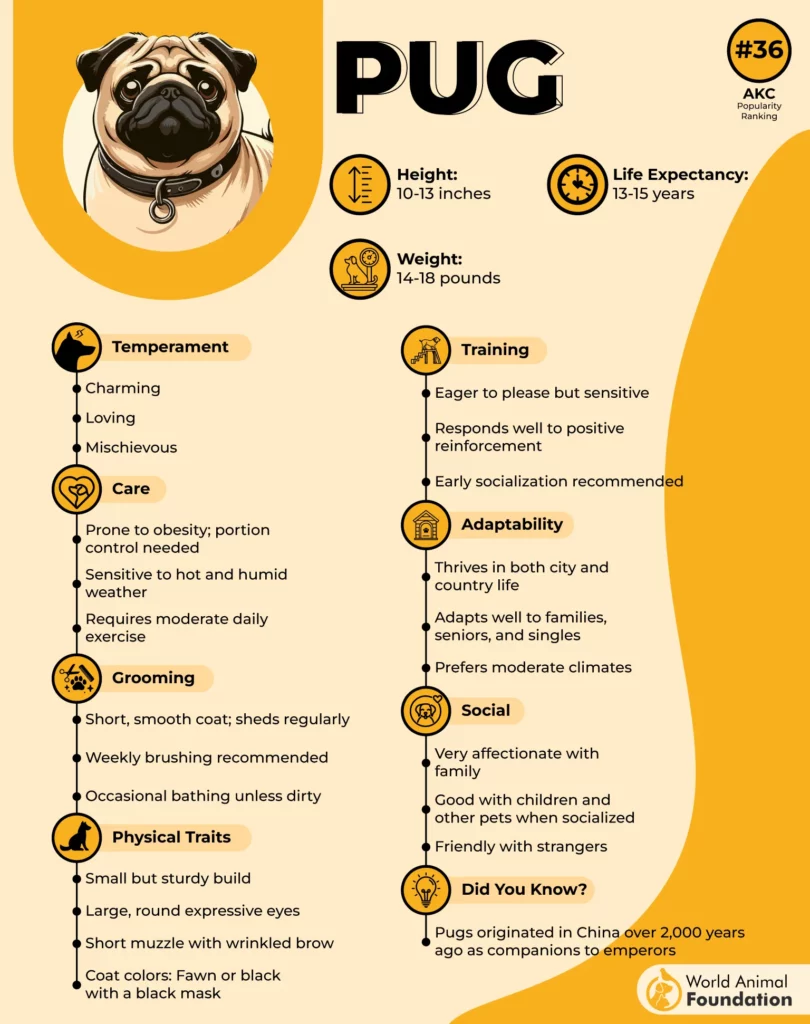
The Boston Terrier, sometimes called the “American Gentleman” due to its tuxedo-like markings, is slightly more athletic in build. Weighing between 12–25 pounds, Boston Terriers have a square jaw, erect ears, and a short, smooth coat. Common coat colors include black and white, seal and white, or brindle and white. Their clean-cut appearance and alert expression make them stand out in any crowd.
While both breeds have brachycephalic (short-nosed) faces, the Boston’s snout is slightly longer, giving them a bit of an edge in terms of breathing efficiency over the Pug. Pugs tend to have more prominent eyes and deeper facial folds, which add to their cuteness but can also increase the risk of eye and skin issues.
In terms of size, the Boston Terrier is slightly taller and leaner, making it a bit more agile. Pugs are more solid and rounded, with a compact, cuddly appeal. Depending on your preference for structure or softness, one may win you over visually more than the other.
Pug vs. Boston Terrier: Training Needs
Both breeds are intelligent, but their personalities lead to different training experiences.
According to the AKC, Pugs are affectionate and eager to please, but they can also be a bit stubborn. They thrive on food rewards and short, engaging training sessions. However, they can become easily distracted or bored if training is repetitive.
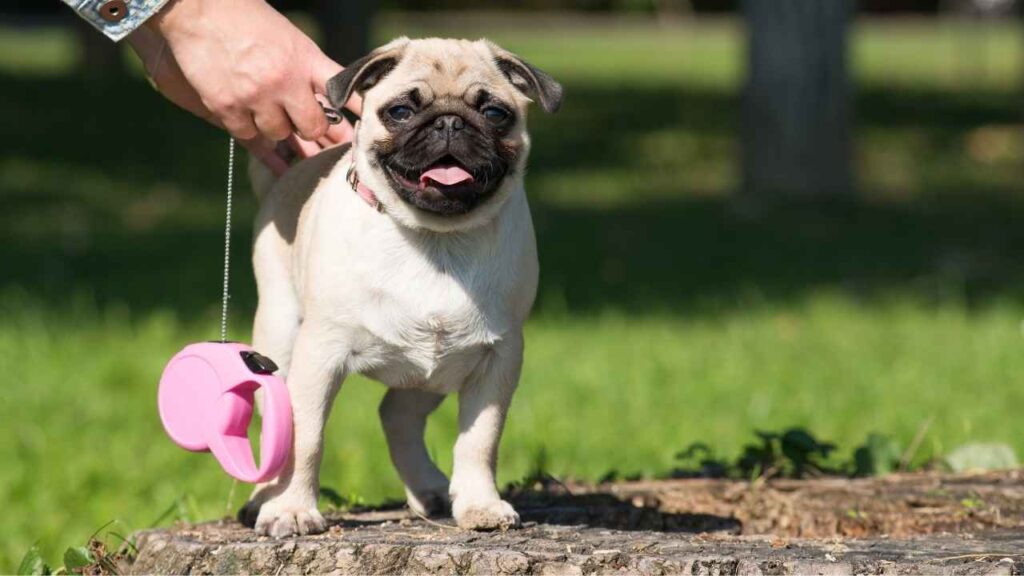
Boston Terriers, on the other hand, are generally quicker to pick up commands and more focused during lessons. They’re spirited and energetic, which often makes them a joy to work with when properly motivated. Positive reinforcement, praise, and consistency go a long way with this breed.

Because of their high social drive, Bostons often excel in basic obedience and even agility if given the chance. They are more biddable than Pugs overall, which may appeal to first-time dog owners looking for quicker results. That said, their high energy levels can sometimes cause them to get overexcited or distracted, especially as puppies.
Pugs require patience and repetition, and their training often needs to be mixed with plenty of affection. Their attention span is shorter, and they’re more likely to shut down if pressured. It’s important to keep sessions upbeat and avoid harsh corrections.
Both breeds respond best to training that feels like a game. Early socialization, housebreaking, and crate training are essential for each. While neither breed is likely to win protection awards, they’ll both win hearts—and behave well—with the right approach.
Pug vs. Boston Terrier: Health and Maintenance
When it comes to health and upkeep, both breeds have their challenges, mainly due to their brachycephalic facial structure. This shared trait can lead to breathing difficulties, heat sensitivity, and snoring. However, the severity and type of health concerns differ between the two breeds.
Pugs are prone to several breed-specific issues, including skin fold infections, eye injuries, and obesity. Their short legs and compact build make exercise important, but also limited—they can easily overheat or develop joint strain. Their wrinkled faces require regular cleaning to prevent infections.
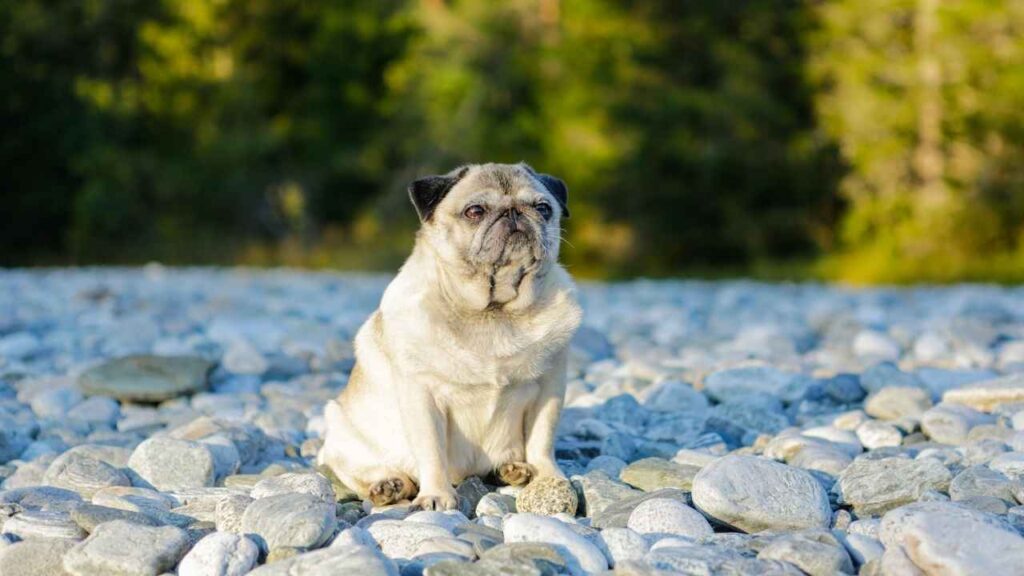
Boston Terriers, while not without issues, tend to have fewer skin and eye problems compared to Pugs. As per PetMD, they’re more active and better suited to outdoor play, though they still need to be monitored in hot weather. Common concerns include allergies, patellar luxation, and gastric issues, especially related to diet.
Grooming needs are minimal for both breeds. Their short coats don’t require trimming, but weekly brushing helps manage shedding and keeps their skin healthy. Bathing once a month—or as needed—is generally sufficient, although Pugs may need more frequent cleaning around their face and ears.

Pugs often require more vet visits and preventative care due to their higher risk of obesity and breathing-related issues. Boston Terriers are slightly more resilient but can be prone to eye problems like cataracts and corneal ulcers. Regular vet checkups, a balanced diet, and moderate activity are key to managing both breeds.
In terms of daily maintenance, Boston Terriers may edge out Pugs due to their cleaner facial structure and fewer grooming demands. Still, both breeds are relatively low-maintenance compared to long-haired or high-shedding dogs.
Pug vs. Boston Terrier: Life Expectancy
Lifespan is a crucial consideration when choosing a companion, and fortunately, both Pugs and Boston Terriers are known for their longevity. On average, Pugs live between 13 to 15 years, although some may face chronic conditions that can affect their quality of life earlier. Their life expectancy depends heavily on diet, exercise, and weight management.
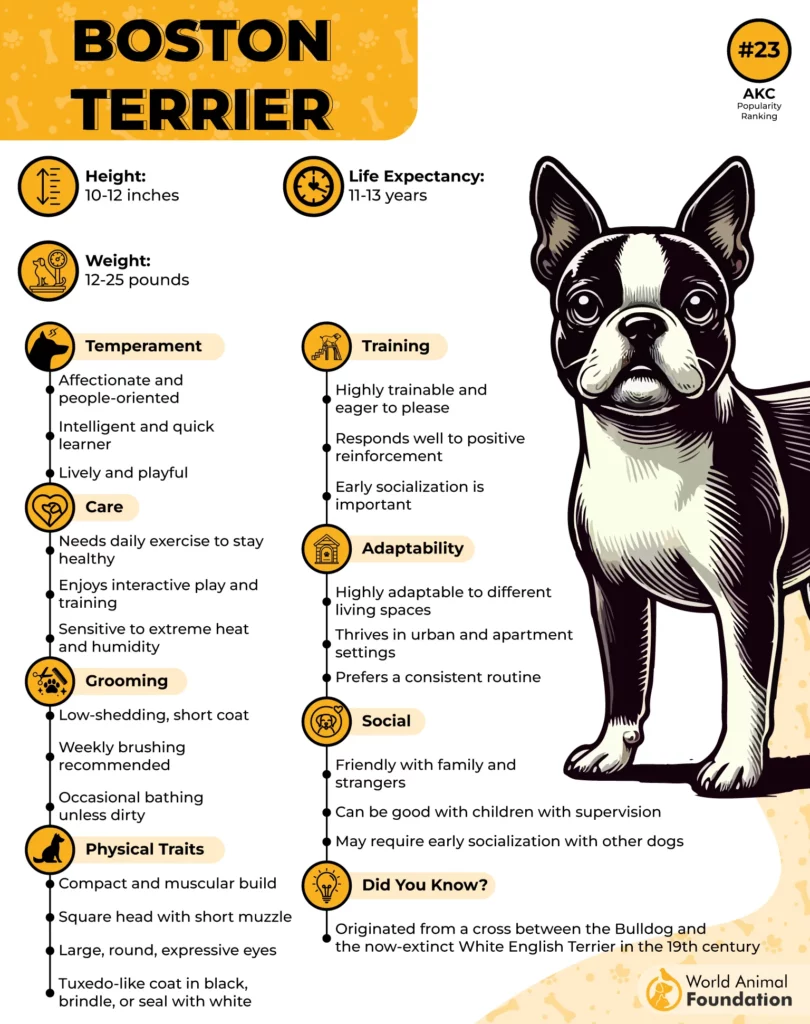
Boston Terriers enjoy a similar lifespan, averaging 11 to 15 years. Thanks to their slightly more athletic build and fewer respiratory issues, they often maintain better mobility into their senior years. Keeping them mentally and physically stimulated can contribute significantly to a longer, healthier life.

Genetics play a role in both breeds, so sourcing from a reputable breeder who screens for common health conditions is essential. Environmental factors—such as exposure to extreme heat or lack of exercise—can also shorten their lifespans. Owners who proactively manage their dogs’ weight and wellness usually see the best results.
Routine vet visits and early detection of breed-specific issues can help extend and improve their lives. This includes regular dental care, joint support, and vision monitoring. While no dog breed is without health concerns, both of these companions tend to live full, loving lives when properly cared for.
Quality of life often outweighs the raw number of years. With their affectionate nature and deep bond with humans, both Pugs and Boston Terriers leave a big impact, even in their small bodies. Choosing a breed that matches your lifestyle will help ensure those years are joyful for both of you.
Conclusion
Both the Pug and the Boston Terrier are excellent companion dogs, each offering their brand of charm, loyalty, and liveliness. While they share a similar size and affectionate nature, their differences lie in energy levels, training ease, and historical background. The Boston Terrier, a proud terrier breed, is known for its playful spirit and slightly more active personality, while the ancient pug brings centuries of tradition as a loving lapdog with an easygoing temperament.
According to the American Kennel Club, both breeds rank consistently among the most popular small dogs in the U.S. thanks to their manageable size and people-focused nature. The Pug was originally bred as a royal companion in China, while the Boston Terrier has a more complex past that includes ties to dog fights—a history that contrasts sharply with its sweet, friendly nature today.
Though neither is known for aggression, proper socialization is important, especially when it comes to interactions with other dogs. Both breeds thrive in homes where they’re treated like family and appreciated for their quirks and loyalty. Whether you’re drawn to the pug’s ancient roots or the Boston’s spunky attitude, each brings a big personality in a compact package.


